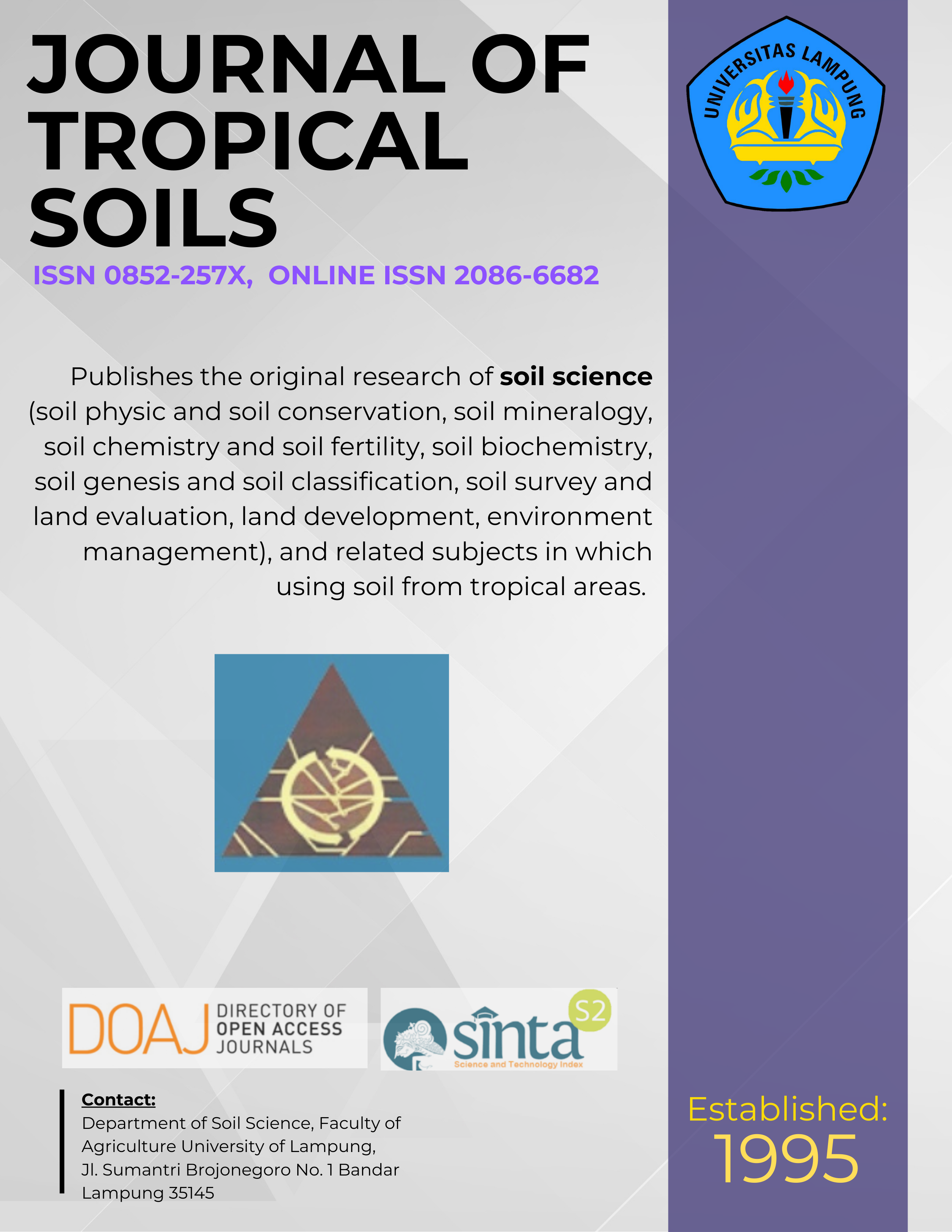Ascertainment of K Nutrient Availability Class for Maize by Several Methods
Main Article Content
Abstract
Research was conducted in Gowa, South Sulawesi at dry land farmer during two years. The aims of the research was to get the best method in ascertainment of availability class of potassium (K) for maize in dry land. The research used a single location approach, which made some of K nutrient artificial. Result of this research indicated that K nutrients class which reached by several methods are: (1) by Cate-Nelson method : two class, ie low and high class, (2) by curve continue method: two until three classes, ie very low to moderate class, low and moderate, and low to high class; and (3) by analysis of variance modified method: three classes, ie low to high class. Ascertainment of K nutrient availability classes by modified analysis of variance method was the best methods compared to other methods. Critical level of K nutrient for maize according to modified analysis of variance method by several extractant is: 0.40 me K 100 g-1 for NH4OAc pH 4.8 extractant; 0.40 to 0.60 me K 100 g-1 for NH4OAc pH 7 extractant; 200-300 ppm K2O for Bray-1 extractant, and 215-250 ppm K2O for Olsen extractant.
[How to Cite: Marthen PS and P Tandisau. 2015. Ascertainment of K Nutrient Availability Class for Maize by Several Methods. J Trop Soils 19: 21-27. Doi: 10.5400/jts.2015.20.1.21]
[Permalink/DOI: www.dx.doi.org/10.5400/jts.2015.20.1.21]
Downloads
Article Details
Section
License for Authors
Authors who publish with this journal agree to the following terms:
- Authors retain copyright and grant the journal right of first publication with the work simultaneously licensed under a Creative Commons Attribution License that allows others to share the work with an acknowledgement of the work's authorship and initial publication in this journal.
- Authors are able to enter into separate, additional contractual arrangements for the non-exclusive distribution of the journal's published version of the work (e.g., post it to an institutional repository or publish it in a book), with an acknowledgement of its initial publication in this journal.
- Authors are permitted and encouraged to post their work online (e.g., in institutional repositories or on their website) prior to and during the submission process, as it can lead to productive exchanges, as well as earlier and greater citation of published work (See The Effect of Open Access).
License for Regular Users
Other regular users who want to cite, distribute, remix, tweak, and build upon author’s works, even for commercial purposes, should acknowledge the work’s authorship and initial publication in this journal, licensed under a Creative Commons Attribution License.

